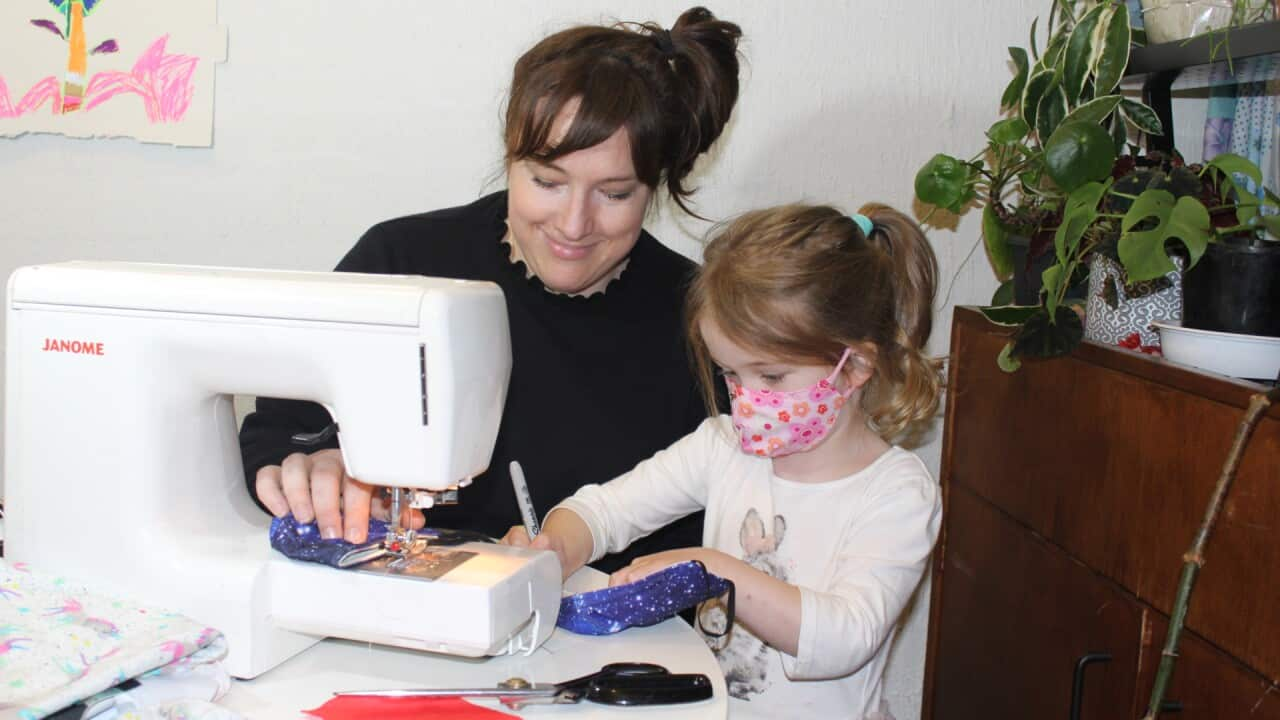With cool wet winter and hot dry summer, South Australia's Mediterranean climate coupled with the richness of its soil is thought to be behind the international success of the local wines produced in Barossa Valley, McLaren Vale and Adelaide Hills.
Romina Leopardi was born looking at the gentle hills of Adelaide facing those vineyards. Born to an Australian mother and an Italian father, her life is divided between Australia and Italy where she lives now and follows the red thread of wine.
"Although I have spent most of my life in Italy, my story is strictly connected with Australia. I lived there until I was about eight when my father, who had migrated from Italy, decided to leave everything once again and returned home driven by a deep nostalgia for his land," she says.
Ms Leopardi has no clear memories of her childhood in Australia but some feelings of those years still remain.
"Sensations related to colours, scents... it was a very special time of my life and when we left I was too young to understand that I was leaving that life, and then embarking on another forever."
"I remember, when my father decided to bring us back to Italy, he wanted us to live a rural experience right from the start because he said it would be the best way for us kids to understand our land,” she told SBS Italian.
Together with her three siblings, Ms Leopardi spent her first days in Italy harvesting grapes at one of her family’s farmsteads.
“We had fun, obviously it was a playful way of living what was a very ancient tradition - winemaking - and to experience the relation between people and their land.”
Her first memories of her new life in Italy - days of fun in the countryside making wine - returned years later and informed the rest of her life.
Saving Susumaniello
Years later, Ms Leopardi was working as a marketing professional when she met her husband, Luigi Rubino who was starting a winery in Apulia, the region known as Italy's heel.
"When he entered my life, it felt incredible. He took me back to some very familiar feelings that were passed on to me by my father - the memories of those early days in Italy making wine. He brought me back to something I felt I belonged to." The winery, , specialises in typical grapes of the area including Malvasia, Primitivo and Negramaro, but also in the restoration of a unique vine that until a few years ago was at risk of extinction.
The winery, , specialises in typical grapes of the area including Malvasia, Primitivo and Negramaro, but also in the restoration of a unique vine that until a few years ago was at risk of extinction.

Romina Leopardi e Luigi Rubino nelle Tenute Rubino, Publia, 2020. Source: Courtesy of Romina Leopardi
"Susumaniello is a very rare grape variety. It originates in the Brindisi countryside, so, it is not only native Apulian vine, it comes from a very small and specific area. The vine was in danger of extinction when we started harvesting. We had to work really hard to recover the production and it took many years," says Ms Leopardi.
A chance discovery
Susumaniellois a black grape variety which is found only in Apulia, and it's origins are lost in the mists of time. Also known as 'Black Donkey', which tends to indicate the characteristic production of the young plant that is so generous that it loads the plant like a donkey.
But as the plant grows old, the vine loses its productivity and can fall below a kilo of grapes per plant.
During the 1990s, when funding was made available to recover less productive vineyard, many winemakers decided to harvest more productive wine varieties, moving away from Susumaniello vineyards to a point that it almost disappeared from the whole region.
Ms Leopardi and her husband decided to propagate Susumaniello when they found about it from a farmer working for the couple after he found some remaining vines of the variety in a plot of land.
The couple then decided to place the vine at the core of their viticultural enterprise.
They recovered and propagated the vine that is now grown on the estate of Jaddico, a 13-hectare single vineyard on the shores of the Adriatic Sea, eight kilometres north of Brindisi - a coastal area which has proven fundamental for the success of the project.
'Lady Susumaniello'
The location has proved to be perfect for the project, not only for its geographic location but also its historical legacy as the area had been producing wine since the ancient Roman times. Brindisi had been a Roman colony since the third century BC and one of the most important production centres of oil and wine vases in Italy.
Together with harvesting the vines again, the couple has returned the estate to its former glory.
The restoration of this vine, its history and the passion in making it known to the world have earned Ms Leopardi the nickname of “Lady Susumaniello” among Italy's wine enthusiasts.
, Tenute Rubino's Susumaniello was listed as one of the best wines to drink in 2019.






